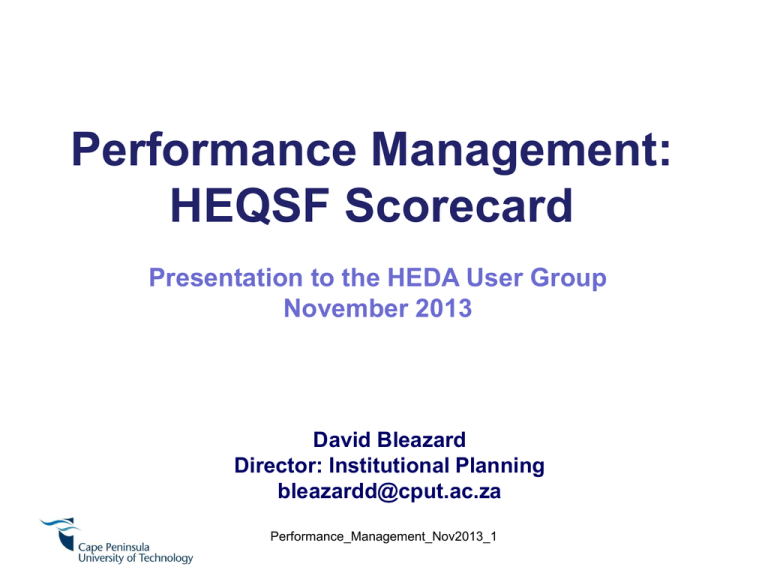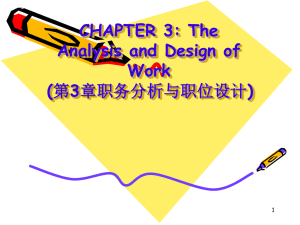Performance Evaluation Scorecard
advertisement

Performance Management: HEQSF Scorecard Presentation to the HEDA User Group November 2013 David Bleazard Director: Institutional Planning bleazardd@cput.ac.za Performance_Management_Nov2013_1 Objective • To show how CPUT is adapting the Performance Management Scorecard to track the HEQSF programme development process Background • The alignment of qualifications to the new Higher Education Qualification Sub-Framework (HEQSF) is a huge challenge for UoTs – B.Techs being phased out – New qualification types include Higher Certificate, Diploma, Degree, Professional Degree, Advanced Diploma • CPUT estimates that it will have to develop about 200 new qualifications during the next five years • The processes for development and approval of the qualifications are complex, both internally and externally Stages and Steps Category A qualifications: Minor amendments required to align to HEQSF Approximately 40 qualifications – mostly postgraduate qualifications Category B qualifications: Less than 50% change to existing curriculum Approximately 70 qualifications – mostly National Diplomas Category C qualifications: More than 50% change to existing curriculum Approximately 110 qualifications – more than half are B.Tech qualifications to be phased out and replaced by HEQSF aligned qualifications Example of Stage & Steps Applied Technology • How to keep track of all the processes and their associated documentation? • The idea arose of using the newly developed Performance Management Scorecard to track and report on progress • The various stages (and steps within stages) of the HEQSF process have been incorporated within the model • Custom-built reports have been developed by IDSC to report on progress to Faculties and Departments Accessing the Module Plans List Plan Example Updating the Plan Attachments Attachment Example Reporting • Reporting was a primary requirement in the conceptualisation of the HEQSF Scorecard • Two levels of reporting are currently available – Detailed Report – Overview Report Accessing the Reports Detailed Report Filter Capability Filter Outcome Drill-down Capability Overview Report Original Conception Suggested Enhancements • Alphabetic Order – Alphabetic ordering of Faculties and Departments can be achieved, but is clumsy • Entering Performance – When data is entered in the Performance Agreement window, the cursor jumps to the top of the page; it should stay at the level of the amended item • Deletion Warnings – Warnings should appear before Faculties, Departments or Qualifications are deleted • Removing Documents – It should be possible to remove a document uploaded in error Challenge • The main challenge in using the HEQSF Scorecard arises from the complexity of the process • A great deal of information for a wide variety of qualifications needs to be captured and updated • Only one person, the Head of Academic Planning, is managing the process and implementing the tracking Advantages • Without something like the Scorecard, the HEQSF alignment process will become unmanageable • The Scorecard provides reports that can be shared with the Faculties and Departments • A central view of the process and its progress is available











